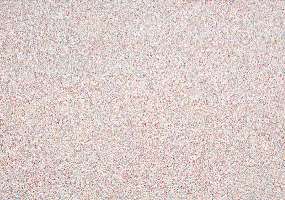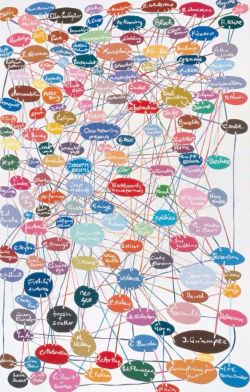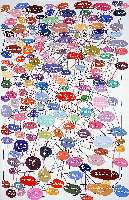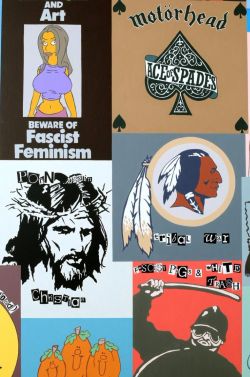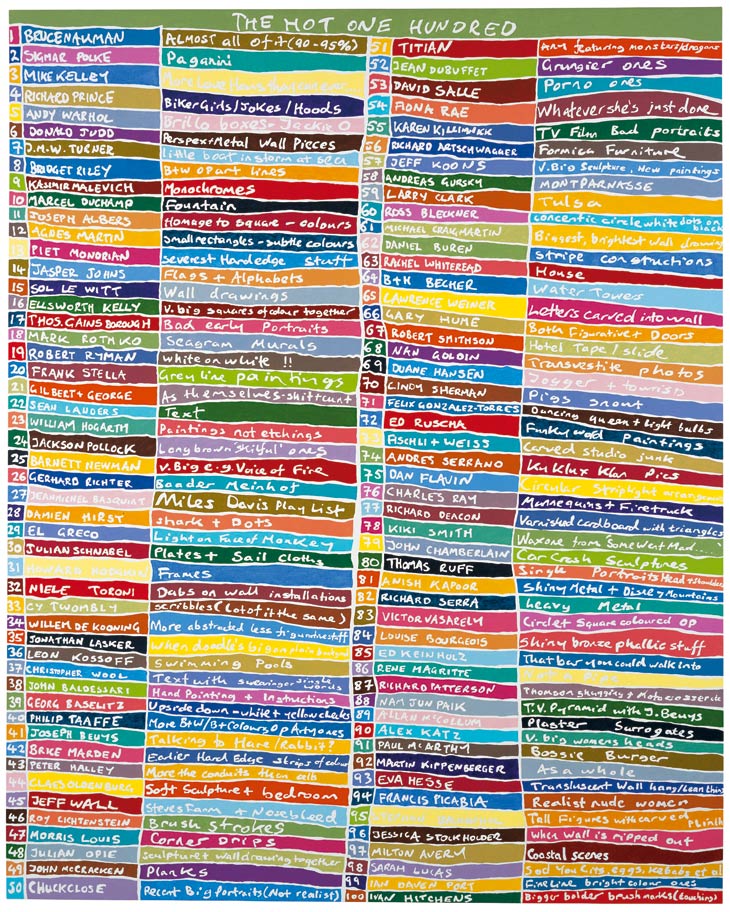


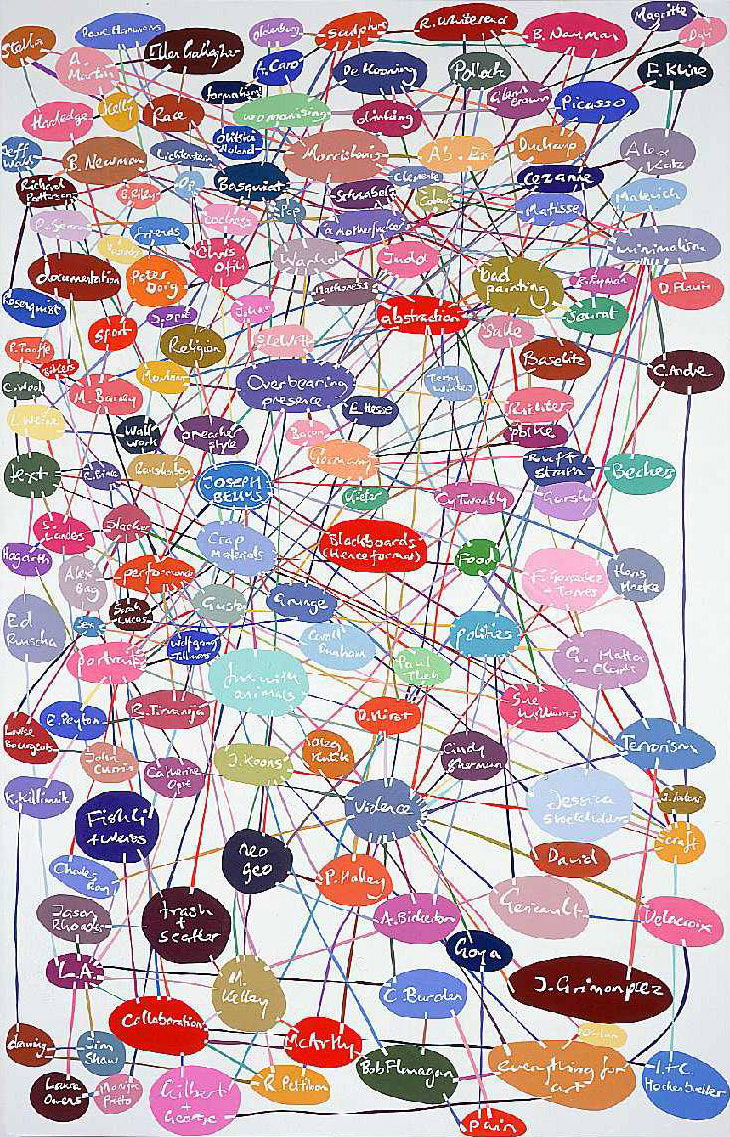

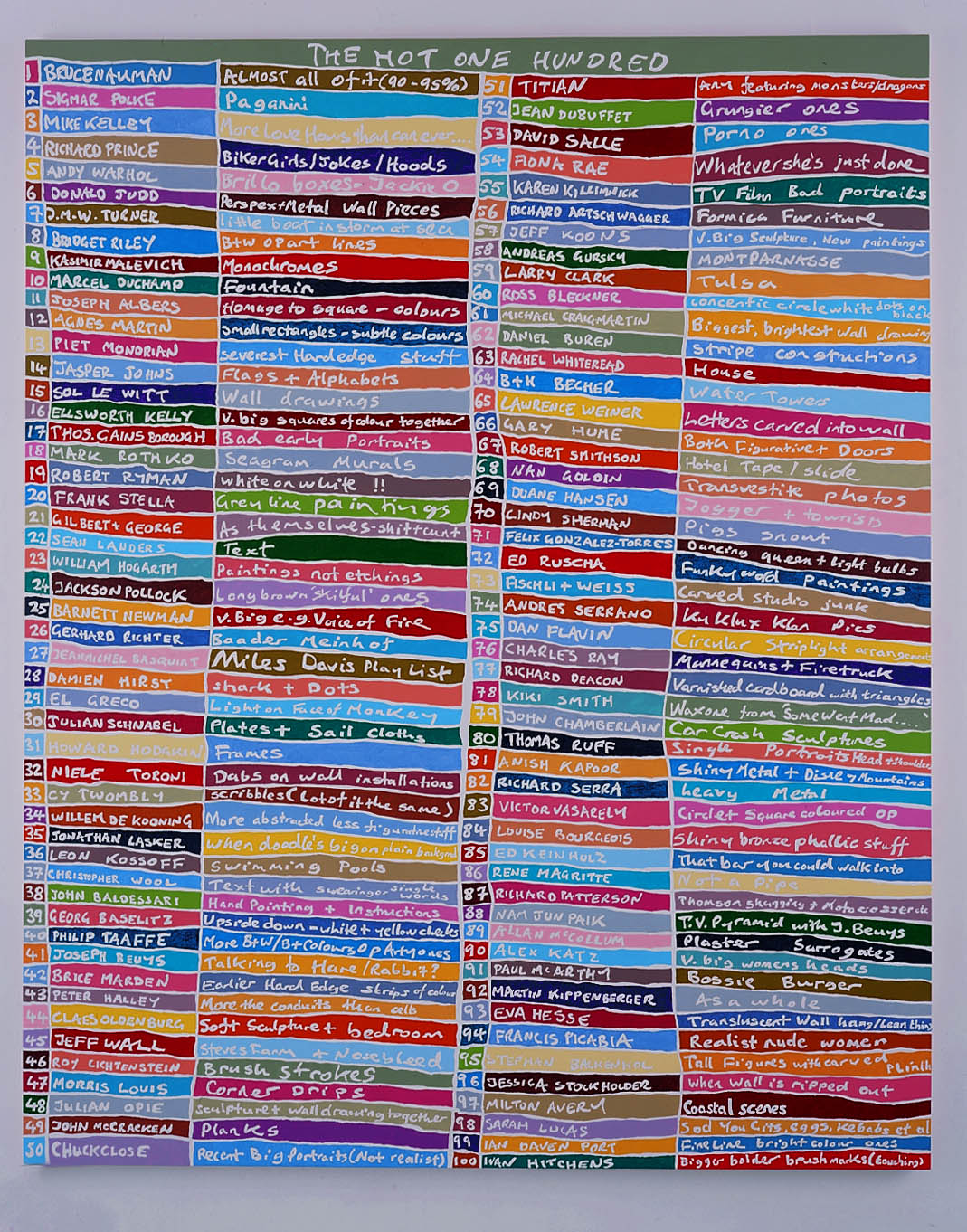
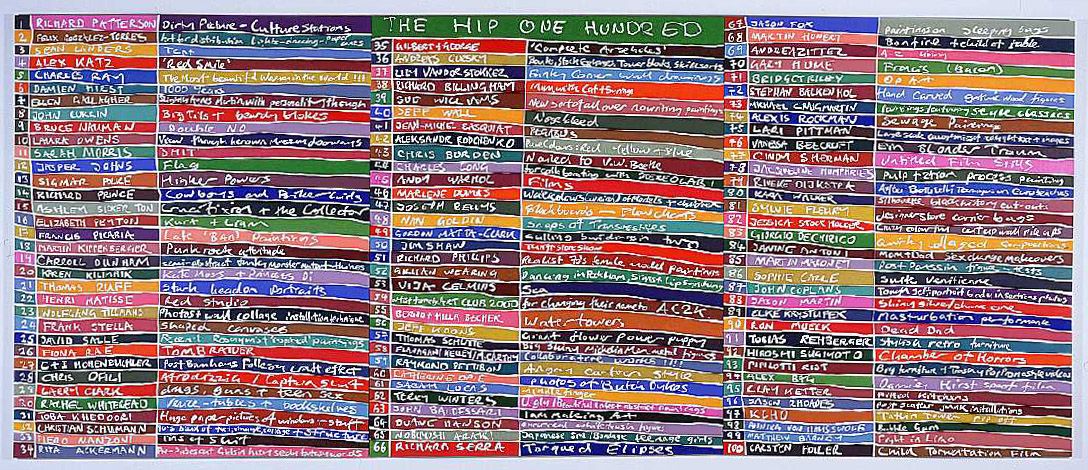
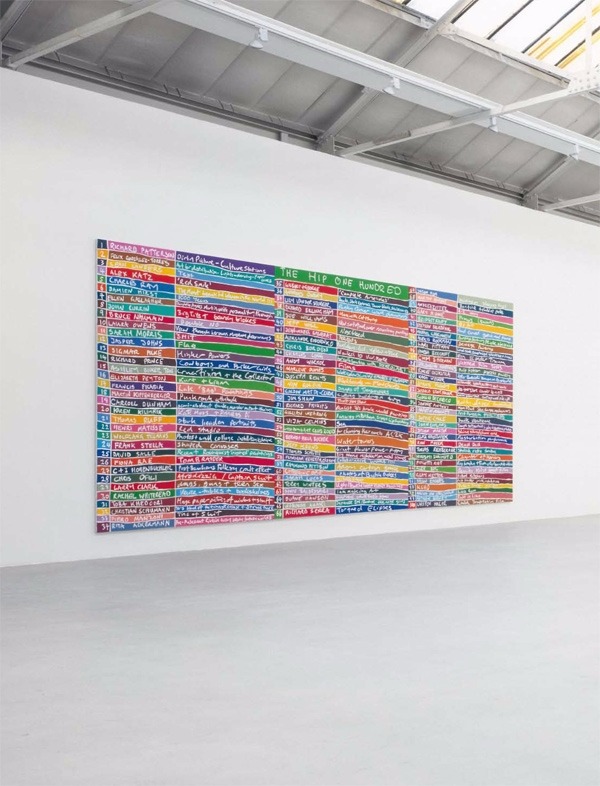
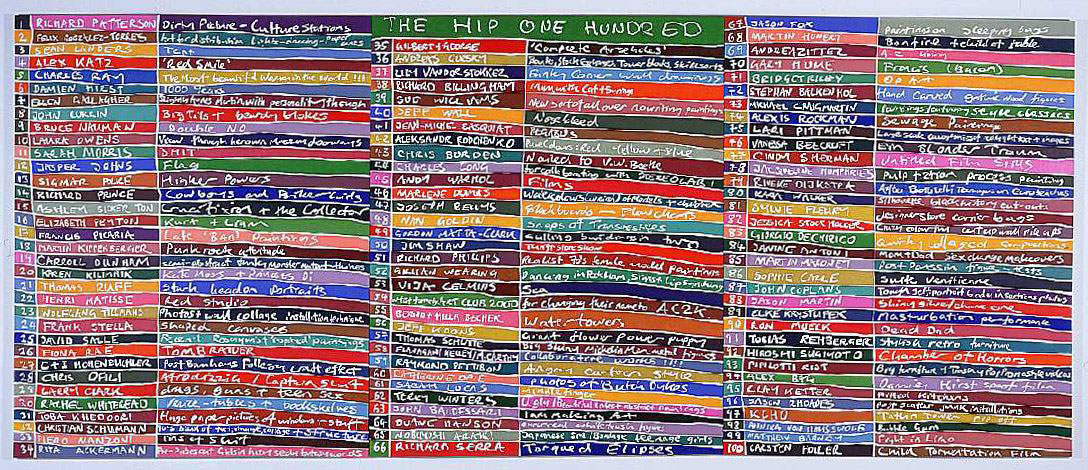
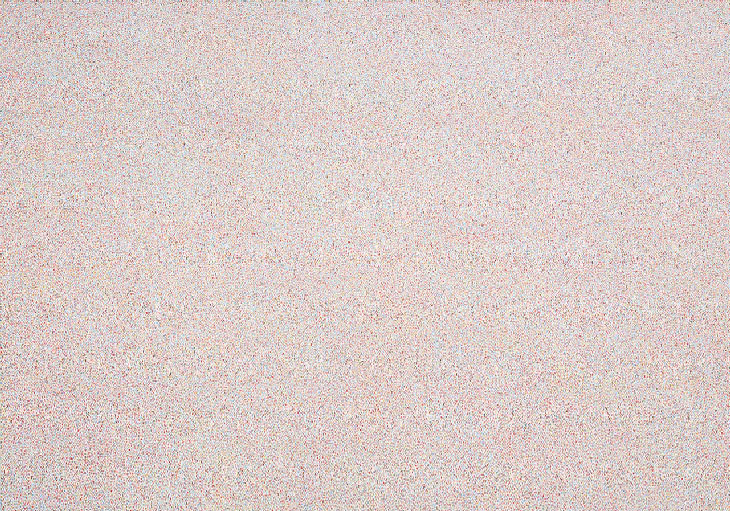
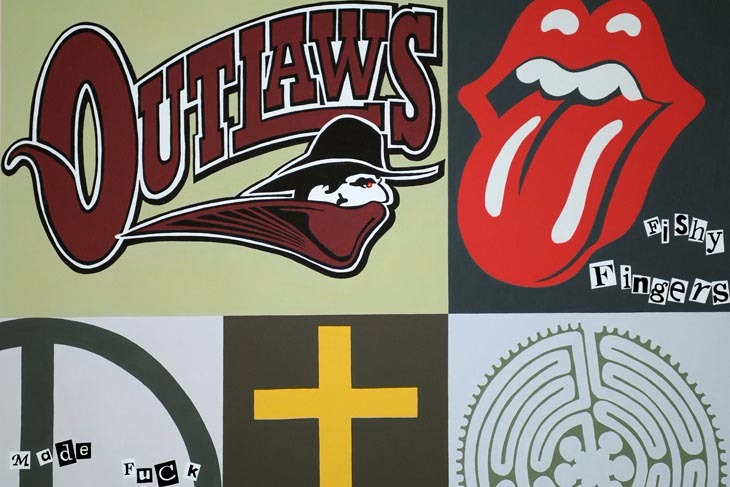

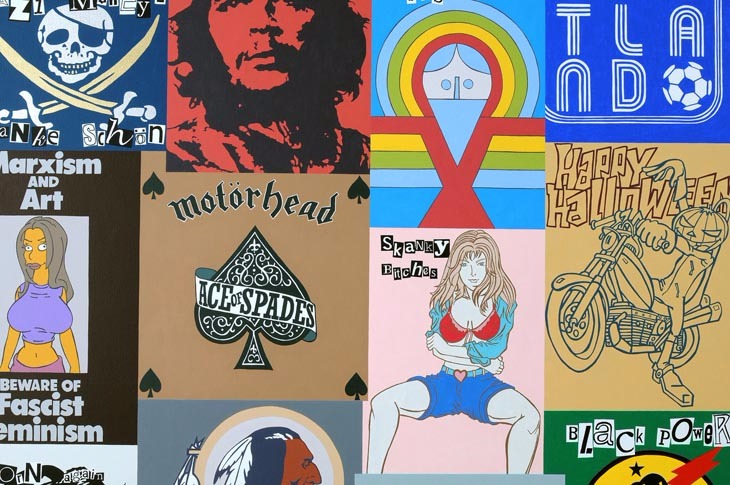
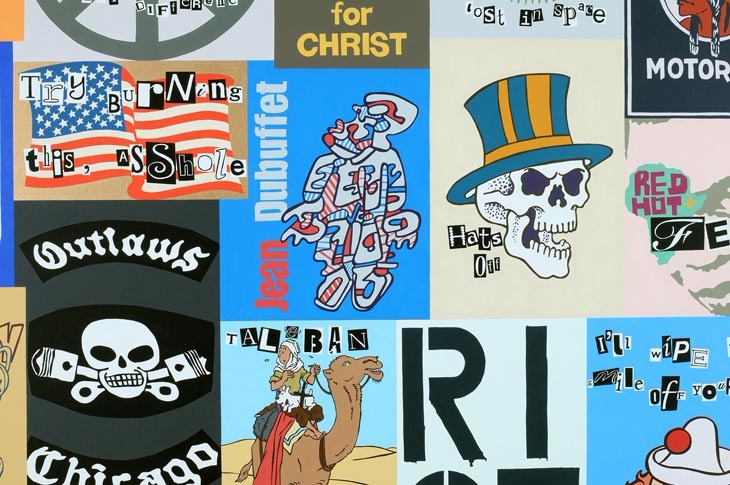

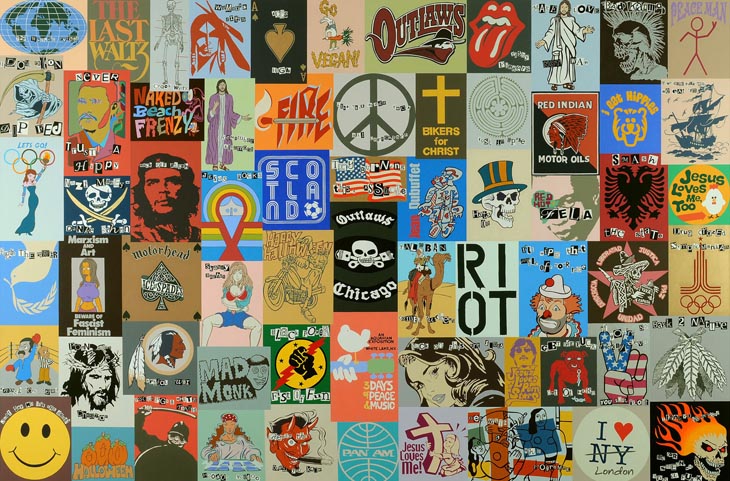
Peter Davies
Peter Davies’s paintings combine ‘the tough, dry humour of conceptualism and the elegance and beauty of formalism’. As Davies explains: ‘It allows conceptualism to be a “look” and formalism to be an “idea”.’ Peter Davies paints transient pop-cultural information systems – lists, charts, bylines – in the slick, clean, high-art tradition of minimalist painting. As in Peter Davies’s abstract works – which are often mega-sized canvases filled with imperfect patterns of bright colours – his aim is to bring the sterile stereotypes of modernism down to a user-friendly level. In his text paintings, Davies uses paint, language and structure to talk about art as if it were just another commodity in the entertainment business; by doing so he places himself at the forefront.
In a giant incomprehensible flow chart (a form borrowed from Beuys’s blackboard works), he maps out the ‘six degrees of separation’ of his art heroes, linking them impossibly to each other, and inevitably back to Beuys. It requires the complicated linear thinking of a late-night drinking game, but Davies proves it’s only twelve easy jumps from Picasso to Sarah Lucas (if Peter Doig and Matthew Barney’s love of sport can be counted as an actual link). Peter Davies presents an art history on a functional level: it’s about as close to science as it gets.
Taste is identity: Davies is as hip as his Hip 100. As frivolous as late night Top 100 TV shows, Davies’ painting is even more fun to watch, and even more entertaining to argue with (Jeff Koons only comes in at 56 ― as if!). Rating his friends, colleagues, and art heroes, Davies pits artists and their works against each other in his mind, vying them for that coveted Number One spot. Davies’ Hip 100 exposes an art world as insidious, cliquey, market-oriented as any other entertainment medium. By making this painting on grand-scale, he’s created a high art monument to the undoing of sacred high art values.
Peter Davies’s paintings combine ‘the tough, dry humour of conceptualism and the elegance and beauty of formalism’. As Davies explains: ‘It allows conceptualism to be a “look” and formalism to be an “idea”.’

